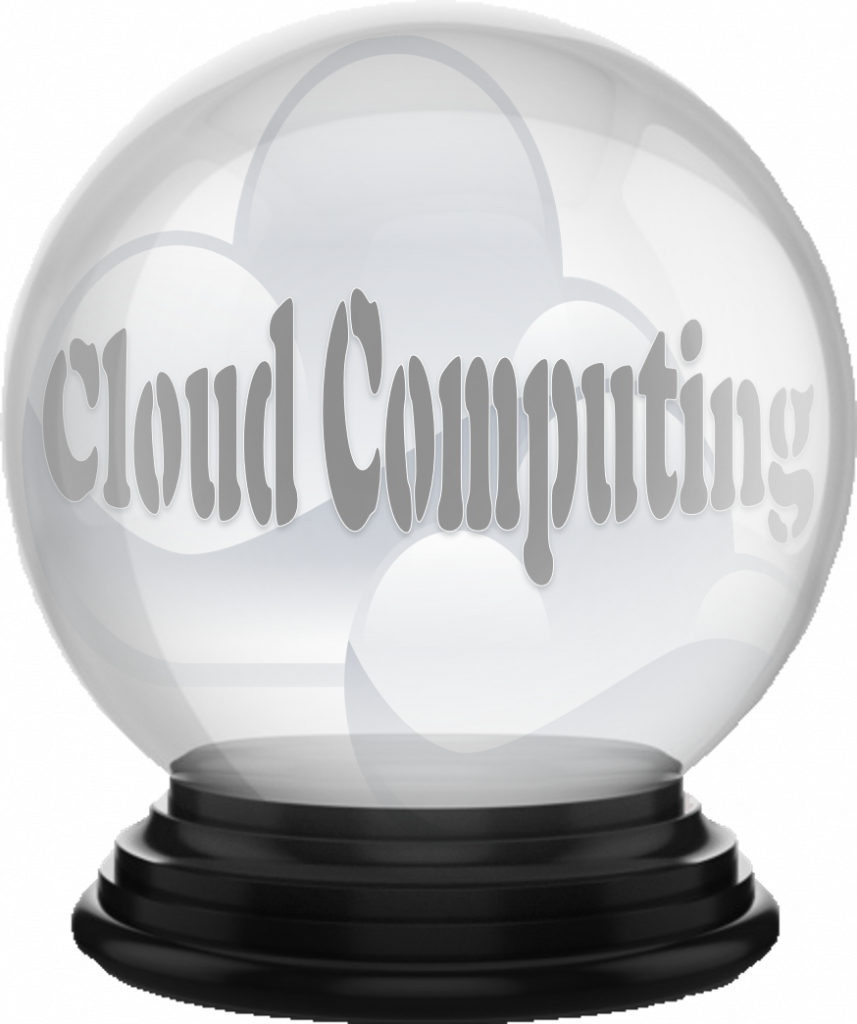Cloud computing has been around for a few years and increasingly companies are appreciating the benefits of moving their operations to the cloud. Naomi Eide (@NaomiEide) writes, “The fate of the cloud is pretty much decided: It’s not going anywhere and companies can rely on cloud providers to host workloads long-term.”[1] She notes, however, “The technology is becoming more specialized as vendors turn attention to tailored solutions across verticals.” Dave Vellante, chief analyst at SiliconANGLE, adds, “With enterprises racing to complete their digital transformations, cloud computing will continue to take market share from on-premises workloads.”[2] One reason cloud computing is gaining traction is because it provides companies with numerous options. Stephanie Simone explains, “Cloud computing has revealed countless new dimensions to IT. There are public clouds, private clouds, distributed clouds, and hybrid, multi-cloud architectures. An actual hybrid cloud will allow for large and small and critical and casual workloads to be seamlessly transitioned between on-premise private cloud infrastructure and any public cloud employed by any organization based on whatever criteria a customer architects.”[3]
Cloud computing trends
Trend 1. Hybrid multicloud is becoming the predominant corporate strategy. Eide writes, “Industry has whispered about infrastructure as a service and cloud computing for years, talk which accelerated as Amazon Web Services’ competitors matured solutions, setting up a fight for customers. Still, only one-fifth of enterprise applications run in the cloud, according to Forrester research. Industry can credit a number of factors for the slow migration: legacy IT investments, the pivot from lift and shift strategies or slow corporate buy-in. With new expectations for cloud adoption, companies are prioritizing hybrid and multicloud options and capitalizing on private and public cloud solutions from multiple vendors. On average, companies run 4.9 private and public clouds, Rightscale found.” Haoyuan Li (@Haoyuan), Chief technology officer at Alluxio, adds, “We’ve been hearing people talk about the hybrid cloud for the past three years now. And for the most part, that’s all it’s been — talk. But 2020 is the year it will get real.”[5]
Trend 2. Cloud security remains a challenge. Eide writes, “Obsession over cloud security ramped up in 2019 and with good reason. … Across all segment sizes, industries, and job titles, people care about cloud security. … Customers are also looking to cloud providers to simplify computing environments, as complexity obscures security. Vendors are already doing a lot to automate security and cloud providers are evolving into a new breed of security provider. An undercurrent is the shared responsibility model. Amazon Web Services owns responsibility for ‘security of the cloud’ and leaves ‘security in the cloud’ to the customers.”
Trend 3. Public cloud providers are being subjected to increased security standards. Stephan Fabel (@sfabel), Director of Product at Canonical, writes, “The lure of major Federal spending will drive … cloud providers to compete in this multi-billion dollar space. One of the biggest impacts will be the need to raise endpoint security and compliance standards in the public cloud. Government bodies work to extremely high requirements, which will now be placed on cloud providers and will have a spillover effect on the sector as a whole. … While this will primarily impact the US cloud market, it will also have ripple effects for other markets. The hyperscale providers are global in nature and so will be required to adjust their policies and practices for jurisdictions such as Post-Brexit United Kingdom, where there will be new standards around data protection and data separation from non-UK entities.”[6]
Cloud computing predictions
Prediction 1. More on-premises workloads will move to the cloud. Vellante acknowledges there is “a growing narrative that the pendulum is swinging back from the cloud to on-premises workloads,” but he states, “That’s a false narrative in my opinion. Rather, the pendulum has swung and the cloud is the underpinning of innovation.”
Prediction 2. Kubernetes will become ever-present. While most people are familiar with cloud computing, Kubernetes, a tool developed by Google, may be new to them. According to the Kubernetes website, “Kubernetes (K8s) is an open-source system for automating deployment, scaling, and management of containerized applications. It groups containers that make up an application into logical units for easy management and discovery. … Kubernetes is open source giving you the freedom to take advantage of on-premises, hybrid, or public cloud infrastructure, letting you effortlessly move workloads to where it matters to you.” Vellante writes, “If we have to pick out one emerging technology that’s already made the grade, it would have to be Kubernetes, which has grown to become the most popular orchestration tool for software containers, which are used to host modern applications that can run on any computing platform. … Kubernetes will likely continue its strong growth, to the point where it becomes embedded in almost every platform.” Li adds, “In 2020, we’ll see a shift to AI and analytic workloads becoming more mainstream. ‘Kubernetifying’ the analytics stack will mean solving for data sharing and elasticity by moving data from remote data silos into K8s clusters for tighter data locality.”
Prediction 3. China will move to the cloud on a scale much larger than the U.S. Li notes, “In the past five years, while enterprises in the U.S. have been moving in leaps and bounds to public clouds, enterprises in China have been investing mostly in on-prem infrastructure, primarily for data-driven platform infrastructure.” He predicts, “2020 will be the inflection point where this changes. China will leapfrog into the cloud at a scale much larger than the U.S. by adopting the public cloud for new use cases, bursting in the cloud for peak loads and over time move existing workloads. Public cloud leaders in China will see dramatic growth that might outpace the growth of the current cloud giants.”
Prediction 4. Cloud-native technologies consolidate. If you’re wondering what cloud-native technologies encompass, Gordon Haff (@ghaff), a technology evangelist at Red Hat, explains, “Cloud-native is really just a shorthand for modern application and infrastructure practices. It’s the recognition that businesses across essentially all industries are increasingly reliant on software that can be brought online quickly, adapt to changing marketplace requirements, and run on infrastructure that’s attuned to both rapid changes in demand and new workload types. Think of it as the inverse of the big, monolithic application running on a big iron server that evolved on a timescale of years.”[6] Kevin Casey (@kevinrcasey) writes, “If you were looking to give an award for the buzziest IT category of 2019, ‘cloud-native’ would certainly deserve your consideration. It’s an early front-runner for one of the hottest segments in 2020, too. As the cloud-native ecosystem continues to mature, there will likely be a shakeup among its tools and technologies.”[7] He cites Rani Osnat (@ranio1), Vice President of strategy at Aqua Security, who predicts, “The cloud-native ecosystem will see further consolidation, with the dominant players solidifying their leadership in the market.”
Prediction 5. All SaaS Becomes Intelligent SaaS. Joseph Tsidulko writes, “Every Software-as-a-Service, IT Ops, analytics and BI product is currently being infused, in various ways and to varying degrees, with machine learning — whether it needs it or not. Beyond the very real advantages artificial intelligence delivers in automation and insight, the term is a huge selling point, one it never hurts to throw into a product pitch. And from a chatbot to an inference engine to predictive analytics, it’s easy for AI to find its way into just about any cloud-software product. Some machine-learning based features are genuinely useful; others just capitalize off the buzz word. But by next year, it will be hard to find a product that’s not billed as intelligent.”[8]
Concluding thoughts
The big take-away from this year’s trends and predictions is the notion of using a single cloud environment is dead. Public clouds, private clouds, distributed clouds, and hybrid, multi-cloud architectures are here to stay, with hybrid cloud architectures receiving the most attention over the past year. Early concerns about the reliability and security of cloud environments have not disappeared, but the benefits of cloud computing are convincing more and more companies to jump to the cloud.
Footnotes
[1] Naomi Eide, “5 cloud trends for 2020,” CIO Dive, 7 January 2020.
[2] Dave Vellante with Mike Wheatley, “Predictions 2020: Cloud, Kubernetes and cybersecurity will rule,” siliconANGLE, 28 December 2019.
[3] Staff, “Production-Grade Container Orchestration,” Kubernetes.
[4] Stephanie Simone, “Big Data Professionals Give 11 Predictions for Cloud’s Evolution in 2020,” Database Trends and Applications, 24 December 2019.
[5] Haoyuan Li, “7 trends that will drive data management and cloud computing in 2020,” Information Management, 16 December 2019.
[6] Stephan Fabel, “5 trends shaping the cloud in 2020,” TechRadar, 6 December 2019.
[7] Kevin Casey, “How to explain cloud-native apps in plain English,” The Enterprisers Project, 18 October 2018.
[8] Kevin Casey, “5 cloud trends to watch in 2020,” The Enterprisers Project, 20 January 2020.
[9] Joseph Tsidulko, “10 Emerging Cloud Computing Trends To Watch In 2020,” CRN, 14 November 2019.





